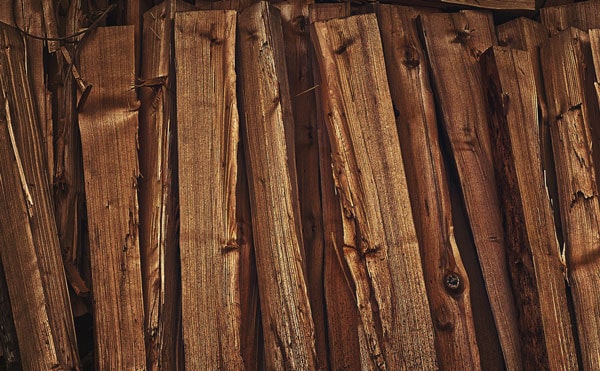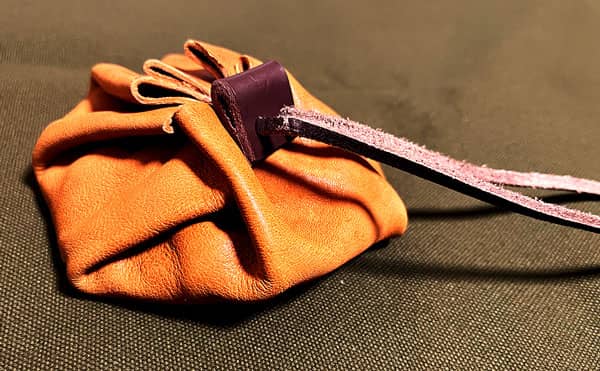
木や薪の種類について
- 作成日
- 編集日2024-07-04
焚き火の時に知っておきたい木の知識。火口と焚き付けの違いは?広葉樹って?針葉樹って?木を知って火を育てよう

木・薪
木を薪として判断する時は大きく分けて「広葉樹」と「針葉樹」の2種類。
| 広葉樹 | 針葉樹 | |
|---|---|---|
| 火持ち | ○ | × |
| 火付き | × | ○ |
| 特徴 | 密度が高く火持ちが良い 熱量が高いが火付きが悪い |
樹液が多く火付きが良い 煙・ヤニの量が多く火持ちが悪い |
基本的にはこう言われています。もちろん同じ広葉樹や針葉樹でも種類によって硬さも違えば燃え方も三種三要。
また、針葉樹の熱は暖を取るのに向いていて、広葉樹の熱は痛く感じるような熱が多いそうな。(なんでも熱波の波長が違うとか?)
木の特徴をまとめた図鑑も見てみてね
水分量
木はストローのように地面から水分を吸い上げて育つ生き物なので、木の内部には水分がたらふく含まれています。
販売されている薪は1年~2年も乾燥させているので水分量が低くよく燃えますが、落ちている木や切ったばかりの生きている木は水分量が多く燃えにくいので苦戦することも。特に着火時はしっかり手順を踏まないと全然火がつかないことも。
また乾燥している薪でも土の上に直接置いているとグングン水分を吸い取って火が着きにくくなるので、朝起きて火を付けようとしたら全然火が上がらないなんてこともザラにあります。そのために薪を置く用のラックなんてのも販売されています。
よく焚き火の近くに置いて乾燥させる~なんて聞きますが、あれは表面の濡れを取る程度で生木を焚き火の近くに置いたとしても中の水分量はほぼ変わりません。熱で乾燥させるには2000℃も必要なんだとか?雨に濡れた、地面の水分を吸った、なんて時には有効な手段かな。
あと雨などで濡れた場合は、表面をナイフでこそぎ落としたり斧で割って濡れていない部分を露出させて火を付ける方法も有効。
余談だけど乾燥させすぎて水分量が0%に近い薪も燃えにくくなるらしい。なんでも木製のガスも一緒に無くなっちゃうとか?
広葉樹
一般的に密度が高く着火性は悪いが火持ちが良く、焚き火にオススメされることが多い広葉樹。
キャンプ場などで購入する場合は針葉樹よりも高い場合が多い。


広葉樹は炎の出は針葉樹よりも劣るけど熾き火で熱量も高いので料理に使う薪に最適。燃えながら形が崩れていく薪が多い。
硬い木が多いのでノコギリで切ったりブッシュクラフトで削ったりするのは大変だったりする。
また、針葉樹と違いススの量が少ないので薪ストーブなんかのエントツ構造の物で燃やす時は広葉樹の方がメンテナンスが楽になる。というか針葉樹はススが多いから長く使ってるとエントツが詰まって大変なことになる。(家に埋め込み型の薪ストーブね)
針葉樹
一般的に樹液を含んでいるため着火性は良いが火持ちが悪く、煙・ヤニも多い焚き付け用に向いている針葉樹。
キャンプ場などで購入する場合は広葉樹よりも安い場合が多い。


針葉樹は油分や木質ガスが多いので炎を上げて燃えるので焚き付け用の薪に最適。形を維持しながら燃え尽きる寸前にボロボロと崩れ落ちる気が多い。
薪には広葉樹がオススメとよく言われるが、ゴウゴウと火を上げてくれるので針葉樹で見る焚き火をしても粋。
また軽くて柔らかいのでブッシュクラフトで加工なんかする時はとても楽ちん。
ヤニや煙が多いと言われるけどしっかり乾燥したものだと広葉樹とさほど変わらない印象。
イチョウみたいに針形の葉ではないのに針葉樹だったりする木もある。
実は広葉樹・針葉樹の分け方は葉の形ではなくて種子の作り方で分けてるから。
竹


焚き火に使われることはまれだけど一応焚き火での竹の性質もご説明。
イメージとしては針葉樹の強化版みたいな高着火・高火力で短命な木。基本的には焚き付けや一時的に火力を上げたい時に使われる。
竹は可燃性の高い油分を含むので火を付けると着火剤のようにすぐさま燃え上がりそのまますぐに炭になることから、竹愛好家はブースターと呼んでるとか呼んでないとか。
注意が必要なのは、竹は中が空洞でそのまま火に入れると中の空気が熱拡張して破裂してしまうので必ず割ってから焚べること。
爆竹の本来の名称はこの破裂のことを言う。普通に怪我する。
火口
火口と書いて(ほくち)と読む、着火具で着火させる素材のこと。
イメージで言うとライターで簡単に火が着くような素材。
基本的には事前に用意しておく物で、 外で拾うことは滅多にない(と思う)

以下がよく火口に使われる素材。
フェザースティックは普通に切った後に細かく切って火口に使える専用の羽を作成する必要があります。
ワセリンは単体で使うというよりも、火持ちを良くするために火口に塗る感じで使います。
パラコードは火口に使える専用の芯が入ってる物。こんなやつ
他にもタールやオイルなんかを染み込ませたティンダーなんかを自作する人もいたりします。
サバイバルテクニック的には靴下やセーターの糸くずを集めたり、ナイフで糸の繊維を集めたりしても火口に使えます。
実はドリトスも油が多いので着火剤代わりになる。
絶対使う機会無いけど。
火口は英語でTinderと言うので、着火具ケースのことをティンダーポーチなんて呼んだりします。
小学校の家庭科の授業感覚で作れるので興味のある方は下記ページを参考に作ってみましょう。
焚き付け
火口から着火させる最初の素材。
イメージで言うとライターで火を付けるには大変そう・火が付かなそうくらいの素材。
すぐに消えてしまう火口の火を貰い広く長く燃えて薪に着火させるために使われる。指の太さくらいかそれ以下の物が多い。

以下がよく火口に使われる焚き付け。
- 小枝
- 細さく割った薪
- 割り箸
- 松ぼっくり
- 乾燥した草や葉
- フェザースティック
基本的に大量の火口も焚き付けになり得るので似たような素材が多いし、「火口→大量の葉→小枝→細い薪」なんて順を多く取れば葉っぱなんかも焚き付けと言えちゃう。
バトニングなんかで薪を小さく割るのはこの焚き付け用にするため。
ネットでは焚き付け用の薪なんてのも売ってるのね。びっくり仰天。

